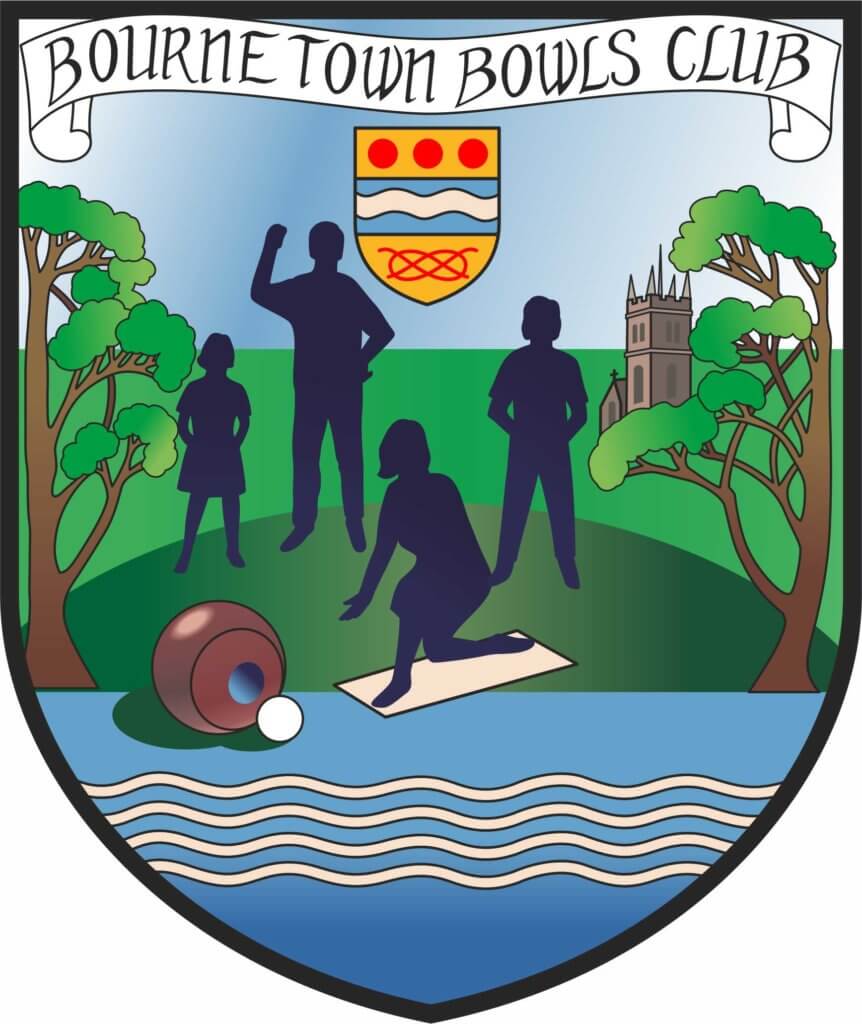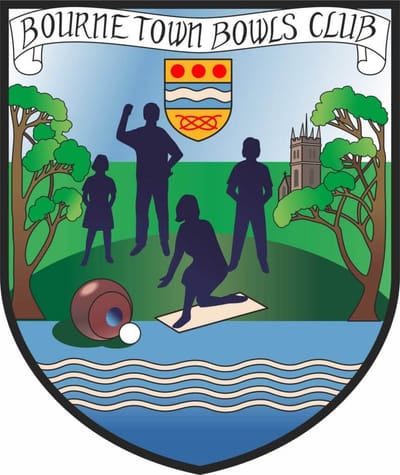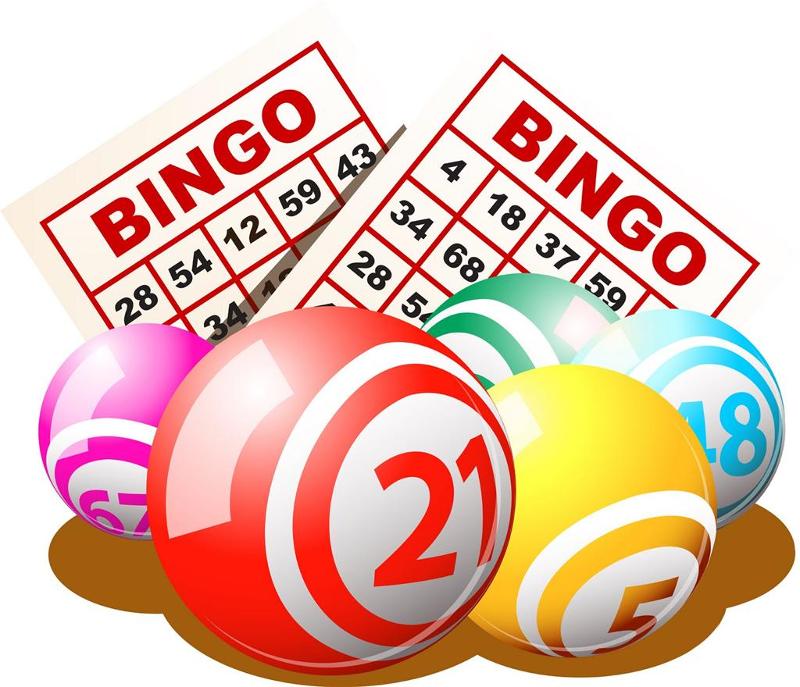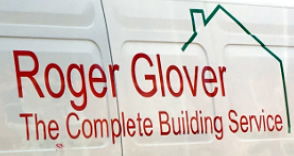Bourne Town Bowls Club
LAWN BOWLING FOR EVERYONE
Check out 'What We Offer' to find out how to get involved. And see the 'News & Events Blog' for what is happening at the Club

About
Bourne Town Bowls Club (that's Bourne in Lincolnshire) can be found on the Abbey Lawn between the outdoor swimming pool and the football ground.
We are a friendly mixed membership club and have a full programme of matches and competitions as well as regular fun bowling days and social events.
We always welcome new members of any age or ability, whether experienced bowlers or new to bowls. We'll help you get started in this great game.
Our bowling green holds 6 (sometimes 7) rinks and is well maintained by our devoted greenkeeper.
We field teams in the Stamford, Spalding & Peterborough leagues and our season runs from mid-April to the end of September depending on the weather.
Just want to spectate? You are very welcome to come along and watch the matches being played free of charge.
Interested In Becoming A Member?
Becoming a member entitles you to use of the Club facilities, the option to take part in the weekly friendly Roll-Up sessions, play in one of our league teams and getting the chance to compete in the Club Competitions.
See the section 'What We Offer' for more information about taster sessions and/or joining the Club.
.
------------------------------------
A Short History of Bowls in Bourne (up to 1995)
Taken from 'A Portrait of Bourne' by Rex Needle
The Bourne Town Bowls Club, occupies land on the far corner of the Abbey Lawn and is now the only bowls club in the town. But it was not always so.
The origins of organised bowling in Bourne date back to 1921 when John Robert Arnold MBE set up the Congregational Sports Club which was involved with both bowls and tennis, on grass and hard courts. It was based in Manning Road on land adjoining the old Bourne Water Works and owned by a local businessman, Mr William Castledine, who rented it out at £1. 5s 0d. a year. The arrangement continued until 1942 but activities ceased because of the Second World War from 1939-45 and the club's assets were sold at auction and the funds donated equally between the Congregational and Methodist Sunday Schools.
Meanwhile, another organisation devoted to the sport, the Bourne Abbey Lawn Bowling Club began in 1922 when volunteers started preparing a new green on the grassland close to the church. Work went ahead with great enthusiasm and the club was opened the following year by the vicar, Canon John Grinter, a keen bowler himself who had also lent a hand with the preparations and who had been instrumental in the negotiations to lease the site to the club for a peppercorn rent of £8.50 a year.
The club continued to prosper for more than 60 years until the Church of England decided that Bourne needed a new vicarage and that the bowling club's green was the right place for it to be built. There were angry protests and the issue went to a public inquiry.
The club's president at that time, Jimmy White, who had been a member for 21 years, said: "The green belongs to the church but it would be a tragedy if we lost it. The club currently has 60 members, a third of them old age pensioners, and so we may not only lose our club, but also the many friendships that have been built up over the years." He added that losing the land would mean searching for a new site and laying a new green that would cost them around £30,000 which they could not afford.
But despite their pleas, the inspector decided in favour of the new vicarage and the bowls club was forced to close down and its members were left without playing facilities.
The Bourne Town Bowls Club was their salvation. It had been formed in 1953 as the Abbey Road Bowling Club with just 20 members and the land on the Abbey Lawn was rented from Bourne United Charities to provide just four rinks but they were only able to play friendly matches.
Many of them joined and this has helped the town club flourish to become one of the best in the county with 130 members now playing on a regular basis. A wooden pavilion was added in 1969 after being purchased for just £30 from Northorpe Cricket Club when it disbanded and can still be seen at the far corner of the green, complete with its original verandah.
This ancient building was replaced with a modern, brick built pavilion that was completed in 1977 and two years later the club changed its name to the Bourne Town Bowls Club with a total of 130 members playing there on a regular basis.
In 1967, the green was extended to six rinks with the co-operation of Bourne United Charities who own the land. Between 1965 and 1967 the club had one team which played in the Stamford League but withdrew in 1968 to join the Spalding League. A B team was added two years later, also playing in the Spalding league, and a ladies' section was formed in 1973 with fifteen members, although now much larger.
The story of the club since then has been one of slow progression and improvement, both with the club facilities and with the playing status. Two more teams entered the Stamford League in 1984 and a new surface was laid on the greens in 1995 at a cost of £13,000, financed with the help of a £10,000 grant from South Kesteven District Council. The club now fields between ten and twelve teams a week in various competitions and other matches but the committee is always anxious to attract more members to their sport and many members feel that the formation of a new club in the town might provide much needed competition, and perhaps an indoor rink. "Another club would also increase the competition and an indoor green in Bourne would mean that we would no longer need to travel to Spalding or Stamford to play in the winter months", said one member.
We are a friendly mixed membership club and have a full programme of matches and competitions as well as regular fun bowling days and social events.
We always welcome new members of any age or ability, whether experienced bowlers or new to bowls. We'll help you get started in this great game.
Our bowling green holds 6 (sometimes 7) rinks and is well maintained by our devoted greenkeeper.
We field teams in the Stamford, Spalding & Peterborough leagues and our season runs from mid-April to the end of September depending on the weather.
Just want to spectate? You are very welcome to come along and watch the matches being played free of charge.
Interested In Becoming A Member?
Becoming a member entitles you to use of the Club facilities, the option to take part in the weekly friendly Roll-Up sessions, play in one of our league teams and getting the chance to compete in the Club Competitions.
See the section 'What We Offer' for more information about taster sessions and/or joining the Club.
.
------------------------------------
A Short History of Bowls in Bourne (up to 1995)
Taken from 'A Portrait of Bourne' by Rex Needle
The Bourne Town Bowls Club, occupies land on the far corner of the Abbey Lawn and is now the only bowls club in the town. But it was not always so.
The origins of organised bowling in Bourne date back to 1921 when John Robert Arnold MBE set up the Congregational Sports Club which was involved with both bowls and tennis, on grass and hard courts. It was based in Manning Road on land adjoining the old Bourne Water Works and owned by a local businessman, Mr William Castledine, who rented it out at £1. 5s 0d. a year. The arrangement continued until 1942 but activities ceased because of the Second World War from 1939-45 and the club's assets were sold at auction and the funds donated equally between the Congregational and Methodist Sunday Schools.
Meanwhile, another organisation devoted to the sport, the Bourne Abbey Lawn Bowling Club began in 1922 when volunteers started preparing a new green on the grassland close to the church. Work went ahead with great enthusiasm and the club was opened the following year by the vicar, Canon John Grinter, a keen bowler himself who had also lent a hand with the preparations and who had been instrumental in the negotiations to lease the site to the club for a peppercorn rent of £8.50 a year.
The club continued to prosper for more than 60 years until the Church of England decided that Bourne needed a new vicarage and that the bowling club's green was the right place for it to be built. There were angry protests and the issue went to a public inquiry.
The club's president at that time, Jimmy White, who had been a member for 21 years, said: "The green belongs to the church but it would be a tragedy if we lost it. The club currently has 60 members, a third of them old age pensioners, and so we may not only lose our club, but also the many friendships that have been built up over the years." He added that losing the land would mean searching for a new site and laying a new green that would cost them around £30,000 which they could not afford.
But despite their pleas, the inspector decided in favour of the new vicarage and the bowls club was forced to close down and its members were left without playing facilities.
The Bourne Town Bowls Club was their salvation. It had been formed in 1953 as the Abbey Road Bowling Club with just 20 members and the land on the Abbey Lawn was rented from Bourne United Charities to provide just four rinks but they were only able to play friendly matches.
Many of them joined and this has helped the town club flourish to become one of the best in the county with 130 members now playing on a regular basis. A wooden pavilion was added in 1969 after being purchased for just £30 from Northorpe Cricket Club when it disbanded and can still be seen at the far corner of the green, complete with its original verandah.
This ancient building was replaced with a modern, brick built pavilion that was completed in 1977 and two years later the club changed its name to the Bourne Town Bowls Club with a total of 130 members playing there on a regular basis.
In 1967, the green was extended to six rinks with the co-operation of Bourne United Charities who own the land. Between 1965 and 1967 the club had one team which played in the Stamford League but withdrew in 1968 to join the Spalding League. A B team was added two years later, also playing in the Spalding league, and a ladies' section was formed in 1973 with fifteen members, although now much larger.
The story of the club since then has been one of slow progression and improvement, both with the club facilities and with the playing status. Two more teams entered the Stamford League in 1984 and a new surface was laid on the greens in 1995 at a cost of £13,000, financed with the help of a £10,000 grant from South Kesteven District Council. The club now fields between ten and twelve teams a week in various competitions and other matches but the committee is always anxious to attract more members to their sport and many members feel that the formation of a new club in the town might provide much needed competition, and perhaps an indoor rink. "Another club would also increase the competition and an indoor green in Bourne would mean that we would no longer need to travel to Spalding or Stamford to play in the winter months", said one member.

Contact
- Coggles Causeway, Bourne, Lincolnshire PE10 9LN, UK
- Bourne Town Bowls Club is situated on the south side of Bourne Town centre. BY CAR From Market Deeping follow the A15 North bound to Bourne. Just before the town centre turn right into Coggles Causeway (opposite Jewson’s builders yard), continue for about 150 yards parking on the left grass verge outside the bowls club. From the North of Bourne, travel South on the A15 through the High Street (over the crossroads), after the double bend you will find Coggles Causeway on the left (again opposite Jewsons builders yard). ON FOOT The Club can also be reached on foot from Abbey Road. Walk through the Abbey Lawns, past the Cricket pitch and Football ground and we are next to the outdoor pool. You will need to walk around the edge of the Club, between us and the Football ground to reach the entrance on Coggles Causeway.
What we offer
News & Events Blog
Friendly Competitions
In-house Competitions
Each year we hold singles and pairs competitions between Club members
Learn MorePaul Finch Trophy
An annual charity and memorial competition in remembrance of a well- liked member
Learn MoreRon & Gwen Neal Shield
A competition inaugurated by the family of Ron and Neil who were both long time members of the Club
Learn MoreLeague Bowling
Cup Competitions
Willoughby Cup
Clubs in the Grantham and Stamford area are invited to take part in this annual competition
Learn MorePlaying Bowls
Welcome to our Guide for being an Active Player
Bowls is a very social game and is always played in a very friendly way. It is a deceptively simple game!
It can be played as singles, but is usually played as doubles (pairs), triples or fours.
We want you to be able to enjoy playing Bowls at all levels and this Guide is intended to help you. If you are not sure about anything please ask an experienced member who will be happy to answer your question or find someone who can.
Rules
Like all games the playing of Bowls is governed by rules. Don’t worry you do not need to learn all the rules when you first start playing. You will gradually pick them up the more you play.
There are, in fact, two sets of Laws of the Game for Bowls in force. These are:
Copies of these are quite cheap to buy and are available from any good Bowls equipment supplier. Bourne Town Bowls Club play roll-ups and most of their matches under EBF rules (except for the Peterborough League matches which are based on EBA with some local variations!).
Etiquette
As well as the Laws of the Game there is an Etiquette all bowlers should follow. In some ways this is more important than the Rules especially for new players. Please see below or more about Etiquette.
PERSONAL EQUIPMENT
Bowls
Also known as ‘woods’ because they used to be made from Lignum Vitae wood but nowadays all bowls are a melamine composite. They come in sets of four bowls. There are different sizes, different weights, different biases (i.e. the amount of bend or curl) and many variations in colour.
New sets of bowls can be very expensive although second hand sets can also be bought at a much cheaper cost. It is better to find your bowl size and weight before you purchase them. We have different bowls you can try out and you might want to talk to other players about the differences in bowls before deciding on spending out!
If you decide that you want to continue bowling then it is advisable to buy you own set of bowls as you will become more familiar with how they ‘roll’ and hopefully become a better player.
Footwear
It is very important that you wear flat sole footwear – there should be no heel or any ridges on the soles at all. This is to prevent damage to the Green (and incurring the wrath of the greenkeeper!). Footwear specifically for Bowls can be bought at any Bowls equipment supplier. We do have some spare footwear available to borrow.
Clothing
Dress code for Roll-Ups and social bowling is smart casual. Dress code for League matches is Club shirt and grey trousers.
Gloves
Some bowlers prefer to use a bowling glove to give them better grip on the bowl. This is a personal preference. An alternative is ‘grippa’ cream that can rubbed on the bowling hand. The simplest solution is a damp towel.
PLAYING TIPS
The Mat
At the beginning of the first end the Mat is placed lengthwise on the centre line of the Rink, the back edge to be two metres from the ditch. It is important the the Mat is centred and straight.
In all subsequent ends the Mat can be placed anywhere along the centre line as long as the back edge of it is not less than two metres from the rear ditch and the front edge not less than 25 metres (23 yards) from the front ditch.
When playing in a match or competition your Skip will indicate to you the position on the Mat and subsequent placement of the Jack.
The Jack
Delivery of the Jack must be within the boundary of the Rink and at least 2 metres from the front ditch.
If the Jack is delivered outside the boundaries of the Rink or into the front ditch the opposing Lead delivers the Jack. The original player remains the first one to bowl.
During the Game:
PLAYER RESPONSIBILITIES
Lead (1)
Special responsibility to place the Mat and bowl the Jack.
When an end is finished the losing Lead is responsible to collecting all the bowls and placing them behind the Jack.
Second (2)
Agree number of shots for or against with opposing Second.
Mark Touchers before next player’s bowl comes to rest. (Needs chalk or spray chalk)
Records players names on score card and compares score with opposing Second.
(In Triples matches) Measure all disputed shots. (needs measuring tape)
(In Triples matches) Gives guidance to Skip on bowling options.
Third (3)
Measure all disputed shots. (Needs measuring tape)
Gives guidance to Skip on bowling options.
Skip
Has sole charge of the Rink on bowling options and his instructions are to be obeyed by all players
Agrees with opposing Skip on any disputed points.
Issues directions on players regarding their bowls.
Decides tactics and strategy
Position of players during play
All players at the Mat end of the Green, other than the one delivering the bowl must stand behind the Mat.
Possession of the Rink
Belongs to the bowler on the Mat. It does not change until the players bowl comes to rest or if the bowl is a Toucher the bowl if marked.
Playing out of turn
If a player plays out of turn the opposing Skip can stop the bowl whilst it is running and have it played its correct turn. If the bowl displaced the Jack or another bowl the Skips can decide to accept the situation or have the end played again.
Playing the wrong bowl
A bowl played by mistake shall be replaced by the players own bowl.
Ricochets
Often during a game bowls will hit other bowls and ricochet off them. Bowlers call this a ‘wick’. It’s no good asking anyone because nobody seems to know why it is called this, the origins of the word seem to have been lost in the mists of time!
ETIQUETTE
To ensure games run smoothly and are enjoyable for you and your fellow players there are certain rules of etiquette that need to be followed.
Don’t worry, these aren’t as daunting as they look! Most of them will become second nature after you have had a few games.
The bottom line is for you and you fellow bowlers to enjoy a good game of bowls. ENJOY !
Bowls is a very social game and is always played in a very friendly way. It is a deceptively simple game!
It can be played as singles, but is usually played as doubles (pairs), triples or fours.
We want you to be able to enjoy playing Bowls at all levels and this Guide is intended to help you. If you are not sure about anything please ask an experienced member who will be happy to answer your question or find someone who can.
Rules
Like all games the playing of Bowls is governed by rules. Don’t worry you do not need to learn all the rules when you first start playing. You will gradually pick them up the more you play.
There are, in fact, two sets of Laws of the Game for Bowls in force. These are:
- EBA (English Bowling Association) aka World Bowls
- EBF (English Bowling Federation)
Copies of these are quite cheap to buy and are available from any good Bowls equipment supplier. Bourne Town Bowls Club play roll-ups and most of their matches under EBF rules (except for the Peterborough League matches which are based on EBA with some local variations!).
Etiquette
As well as the Laws of the Game there is an Etiquette all bowlers should follow. In some ways this is more important than the Rules especially for new players. Please see below or more about Etiquette.
PERSONAL EQUIPMENT
Bowls
Also known as ‘woods’ because they used to be made from Lignum Vitae wood but nowadays all bowls are a melamine composite. They come in sets of four bowls. There are different sizes, different weights, different biases (i.e. the amount of bend or curl) and many variations in colour.
New sets of bowls can be very expensive although second hand sets can also be bought at a much cheaper cost. It is better to find your bowl size and weight before you purchase them. We have different bowls you can try out and you might want to talk to other players about the differences in bowls before deciding on spending out!
If you decide that you want to continue bowling then it is advisable to buy you own set of bowls as you will become more familiar with how they ‘roll’ and hopefully become a better player.
Footwear
It is very important that you wear flat sole footwear – there should be no heel or any ridges on the soles at all. This is to prevent damage to the Green (and incurring the wrath of the greenkeeper!). Footwear specifically for Bowls can be bought at any Bowls equipment supplier. We do have some spare footwear available to borrow.
Clothing
Dress code for Roll-Ups and social bowling is smart casual. Dress code for League matches is Club shirt and grey trousers.
Gloves
Some bowlers prefer to use a bowling glove to give them better grip on the bowl. This is a personal preference. An alternative is ‘grippa’ cream that can rubbed on the bowling hand. The simplest solution is a damp towel.
PLAYING TIPS
The Mat
At the beginning of the first end the Mat is placed lengthwise on the centre line of the Rink, the back edge to be two metres from the ditch. It is important the the Mat is centred and straight.
In all subsequent ends the Mat can be placed anywhere along the centre line as long as the back edge of it is not less than two metres from the rear ditch and the front edge not less than 25 metres (23 yards) from the front ditch.
When playing in a match or competition your Skip will indicate to you the position on the Mat and subsequent placement of the Jack.
The Jack
Delivery of the Jack must be within the boundary of the Rink and at least 2 metres from the front ditch.
If the Jack is delivered outside the boundaries of the Rink or into the front ditch the opposing Lead delivers the Jack. The original player remains the first one to bowl.
During the Game:
- The Jack is live if it goes into the front ditch.
- The Jack is dead if it goes out of bounds of the Rink.
- It is dead if it rebounds on the rink to less than 20 metres from the centre of the Mat line.
- A live bowl is one which travels more than 14 metres from the centre of the Mat line
- A dead bowl is one that travels less than 14 metres from the centre of the Mat line
- A bowl is dead if it finishes in the ditch without touching the Jack
- A bowl is dead if it comes to rest so that the whole of the bowl is outside the boundaries of the Rink even if it has been marked as Toucher or has been been knocked outside the boundary by another bowl. (Note: a ‘Toucher’ is a bowl that has hit the Jack and is marked with chalk. This only happens under EBA rules. When playing under EBF rules any bowl which finishes in the ditch is dead).
- Dead bowls must be picked up and placed on the bank of the Rink.
- Restore the displaced bowl to its original position
- Let the displaced bowl remain where it has rested.
- Declare the bowl dead.
- Have the end played again in the same direction
PLAYER RESPONSIBILITIES
Lead (1)
Special responsibility to place the Mat and bowl the Jack.
When an end is finished the losing Lead is responsible to collecting all the bowls and placing them behind the Jack.
Second (2)
Agree number of shots for or against with opposing Second.
Mark Touchers before next player’s bowl comes to rest. (Needs chalk or spray chalk)
Records players names on score card and compares score with opposing Second.
(In Triples matches) Measure all disputed shots. (needs measuring tape)
(In Triples matches) Gives guidance to Skip on bowling options.
Third (3)
Measure all disputed shots. (Needs measuring tape)
Gives guidance to Skip on bowling options.
Skip
Has sole charge of the Rink on bowling options and his instructions are to be obeyed by all players
Agrees with opposing Skip on any disputed points.
Issues directions on players regarding their bowls.
Decides tactics and strategy
Position of players during play
All players at the Mat end of the Green, other than the one delivering the bowl must stand behind the Mat.
Possession of the Rink
Belongs to the bowler on the Mat. It does not change until the players bowl comes to rest or if the bowl is a Toucher the bowl if marked.
Playing out of turn
If a player plays out of turn the opposing Skip can stop the bowl whilst it is running and have it played its correct turn. If the bowl displaced the Jack or another bowl the Skips can decide to accept the situation or have the end played again.
Playing the wrong bowl
A bowl played by mistake shall be replaced by the players own bowl.
Ricochets
Often during a game bowls will hit other bowls and ricochet off them. Bowlers call this a ‘wick’. It’s no good asking anyone because nobody seems to know why it is called this, the origins of the word seem to have been lost in the mists of time!
ETIQUETTE
To ensure games run smoothly and are enjoyable for you and your fellow players there are certain rules of etiquette that need to be followed.
Don’t worry, these aren’t as daunting as they look! Most of them will become second nature after you have had a few games.
- Greet team members and opponents at the start of the game. Congratulate or compliment them at the end of play. Shake hands with everyone at the start of the game and at its conclusion.
- Dress correctly for all games and arrive in good time.
- Mobile phones are not to be used on the Green or surrounding areas where they may distract players.
- Be aware of your role in the team – Lead (1), Second (2), Third (3) or Skip – and what that entails (see ‘Player Responsibilities’ above)
- Concentrate fully on the game and all the bowls as they are delivered. Remember you can pick up clues to how the Green is behaving for when you bowl
- Do not talk or make a noise behind the Mat, or move at the Head end, when a player is preparing to bowl. Remain behind the Mat or behind the Head until the player has bowled.
- Remember that as soon as your bowl comes to rest the possession of the Rink (at both ends) passes to your opponents.
- Avoid obscuring the Ring number, Rink edge markers or the Jack.
- When it is you turn to bowl listen to your Skip’s directions and try to bowl to them
- Keep to your own Rink
- Walk down the centre of your Rink when changing ends
- Don’t walk past the end of a Rink when someone is bowling towards your end.
- Make sure your shadow does not fall across the Jack, Head or the Mat
- Ensure your bowls do not interfere with adjacent rinks and players
- The winning Lead (1) takes the Mat and places it being aware of the Skip’s directions
- The losing Lead (1) collects all the bowls and places them behind the Mat. Other bowlers may help collect bowls if necessary
- The losing Lead (1) puts out the opponents bowl for the next end
- Be aware that when Drive shots are being played it is essential to keep your eye on the bowls and ensure no one gets hit by flying bowls! This includes stopping any interference with adjacent rinks and players.
The bottom line is for you and you fellow bowlers to enjoy a good game of bowls. ENJOY !
Members Only

Members Only Site
Please click the 'Read More' button to be taken to the Club's Members' Only site. You will need the password to access this site which is available from the Club Secretary.
Read More





















